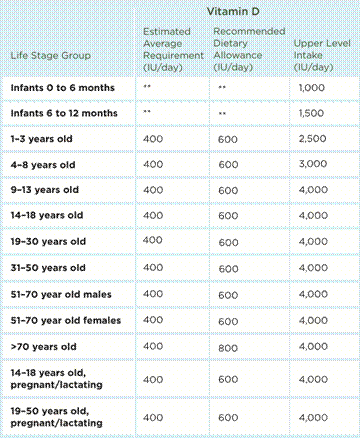Vitamin D: New Guidelines & What you Need to Know

Where do we get Vitamin D?
In addition to sunlight, which is difficult to acquire in the winter months depending on your climate, vitamin D is abundant in fortified dairy products, fish, and ready-to-eat cereals. See below to understand how much Vitamin D is in common foods we consume:
Salmon, sockeye, cooked (3 oz) = 794 International Units (IU)
Salmon, smoked (3 oz) = 583 IU
Tuna, light, canned in oil (3 oz) = 229 IU
Tuna, light, canned in water (3 oz) = 154 IU
Milk, skim, vitamin A & D added (8 oz) = 115 IU
Egg, whole (1 large) = 27 IU
How much does my child need?
Toddler age children and even into school age, have small appetites. Attempting to pack in sufficient vitamin D from food sources is tough, especially for those who don’t consume fish. Taking a supplement is suggested. However, taking more than 400 IUs in supplement form is not necessary, nor suggested. See this excerpted table from the IOM to determine how much vitamin D is appropriate, depending on your age. Infants 0-12 months should get at least 400 IUs daily; most standard infant formulas provide about 400 IUs per 32 oz. If they are taking less or exclusively breastfed, vitamin D should be supplemented in doses of 400 IU daily.

Bottom line, to ensure you and your child receive sufficient vitamin D, make sure to take a general multivitamin with at least 400 IUs of vitamin D daily. Remember to try to include fortified dairy products, fish, and when you can, get plenty of sunshine in your daily routine!